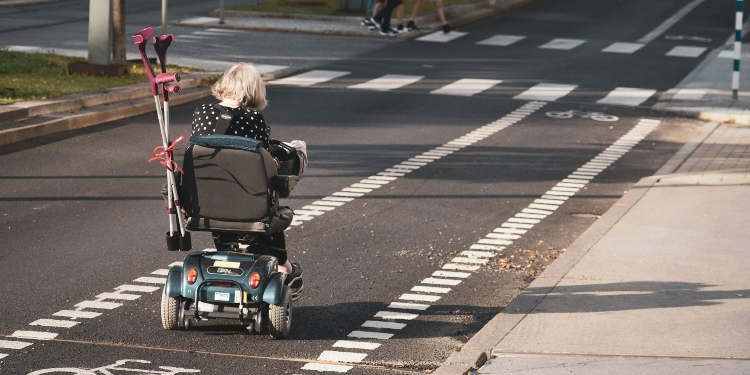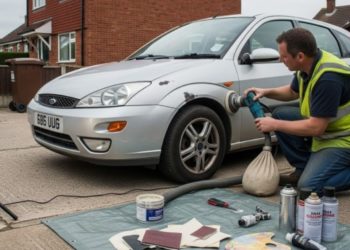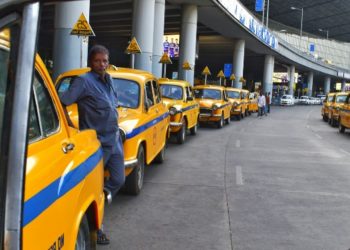Navigating the complexities of elderly care often extends beyond healthcare and into daily activities like driving. For many seniors, driving represents independence and the ability to maintain social connections. However, as we age, our physical and cognitive abilities can decline, making it crucial to consider safer alternatives to traditional driving. This article aims to guide family members and caregivers through options that keep our elderly loved ones safe and mobile, while easing your peace of mind.
Understanding the Challenges of Elderly Driving
Driving is a complex task that requires quick reflexes, keen vision, and sharp cognitive abilities. For seniors, the natural ageing process can impair these faculties, increasing the risk of accidents. Research shows that elderly drivers are more prone to crashes per mile driven compared to younger drivers. This statistic underscores the need for proactive approaches in managing their transportation needs.
Family members often struggle with the difficult conversation about giving up driving. It’s essential to approach this topic with empathy, understanding the emotional impact it has on seniors who cherish their independence. By focusing on safety and offering viable alternatives, you can help ease the transition and ensure they remain active and engaged.
The Rise of Mobility Scooters
Mobility scooters have emerged as a popular solution for seniors who can no longer drive safely. These electric-powered vehicles provide an excellent substitute for short trips, allowing elders to retain their autonomy without the risks associated with driving a car. With various models available, from three-wheeled to four-wheeled options, there’s a scooter to suit every need and terrain.
In urban areas, mobility scooters offer a convenient way to run errands or visit friends, especially when public transport isn’t readily available. They are designed with user-friendly controls and comfortable seating, making them an ideal choice for elderly users. Additionally, many scooters come equipped with safety features such as lights, horns, and easy-to-use brakes, ensuring a secure ride. Encouraging the use of a mobility scooter can be a gentle way to suggest a safer mode of transport.
Lightweight Wheelchairs for Enhanced Mobility
For seniors who may require more support than a scooter offers, lightweight wheelchairs present another practical alternative. These wheelchairs are designed to be easily manoeuvrable, allowing users to move around with minimal effort. They can be manually operated or powered, depending on the individual’s preference and physical capability.
Lightweight wheelchairs are particularly beneficial for indoor use or in environments where narrow spaces are common. Their portability means they can be effortlessly transported by car, enabling seniors to enjoy outings without the hassle of navigating large, cumbersome equipment. Additionally, many models offer adjustable features to enhance comfort, ensuring users remain cosy during extended use.
Transitioning an elderly loved one to a wheelchair requires sensitivity and support. Involve them in the decision-making process and ensure they feel comfortable and confident using the device. With the right wheelchair, seniors can maintain their independence and continue engaging in their favourite activities.
Exploring Community Transportation Options
Beyond personal mobility devices, community transportation services offer another viable solution for seniors who have stopped driving. Many towns and cities provide dedicated transport options for the elderly, including shuttle services, ride-sharing programmes, and public transport discounts.
These services aim to facilitate easy access to essential destinations such as grocery stores, medical facilities, and community centres. For family members, exploring these options can alleviate the pressure of being the sole provider of transport, ensuring your loved ones remain active participants in their community.
To take full advantage of community transport, familiarise yourself with the services available in your area. Encourage your elderly relatives to try different options and gather feedback to determine the most convenient and user-friendly solutions.
Encouraging Social Connections
Keeping our elderly loved ones socially engaged is vital for their mental and emotional well-being. Reduced mobility shouldn’t equate to isolation. Encourage participation in community events, clubs, or volunteer opportunities where they can interact with peers and foster meaningful relationships.
Family members can also play an integral role in maintaining these connections. Regular visits, phone calls, and video chats help bridge the gap and provide companionship. Additionally, planning outings and activities together strengthens familial bonds and creates cherished memories.
Exploring Technology Solutions
Technology offers innovative ways to support elderly mobility and safety. GPS tracking devices, emergency alert systems, and smartphone apps designed for seniors can enhance their independence while providing peace of mind for family members.
Encouraging your loved ones to familiarise themselves with these technologies can empower them to manage their mobility securely. Many devices are intuitive and require minimal technical knowledge, making them accessible to users of all ages.
The Emotional Aspect of Transition
Transitioning from driving to alternative mobility solutions involves more than physical logistics, it encompasses emotional considerations. Acknowledging the feelings of loss or frustration that may accompany this change is essential for a smooth transition.
Family members should approach this topic with empathy and understanding, emphasising the benefits of safety and freedom associated with new mobility options. It’s crucial to offer reassurance and support throughout the process, ensuring your loved ones feel heard and valued.
Using open communication and providing unwavering support can help your elderly relatives adjust to their new reality with grace and dignity. This compassionate approach strengthens family bonds and promotes a positive outlook on life.
Empowering Elderly Independence
At the heart of these alternatives to driving is the goal of empowering seniors to live independently while prioritising their safety. By exploring various mobility solutions, engaging in open conversations, and leveraging community resources, you can support your loved ones in maintaining their autonomy.
Family caregivers, safety advocates, and community programs all play integral roles in this endeavour. By working together, we can ensure our elderly relatives lead fulfilling lives, enriched by meaningful connections and experiences.
Let’s celebrate the resilience and wisdom of our seniors by providing them with the tools and support they need to thrive in their golden years. Together, we can create a safe, inclusive, and vibrant environment for all.
Taking Action for a Safer Future
In conclusion, addressing the mobility needs of our elderly loved ones requires a thoughtful and compassionate approach. By exploring alternative solutions such as mobility scooters, lightweight wheelchairs, and community transportation services, we can enhance their quality of life and ensure their safety.
David Prior
David Prior is the editor of Today News, responsible for the overall editorial strategy. He is an NCTJ-qualified journalist with over 20 years’ experience, and is also editor of the award-winning hyperlocal news title Altrincham Today. His LinkedIn profile is here.













































































